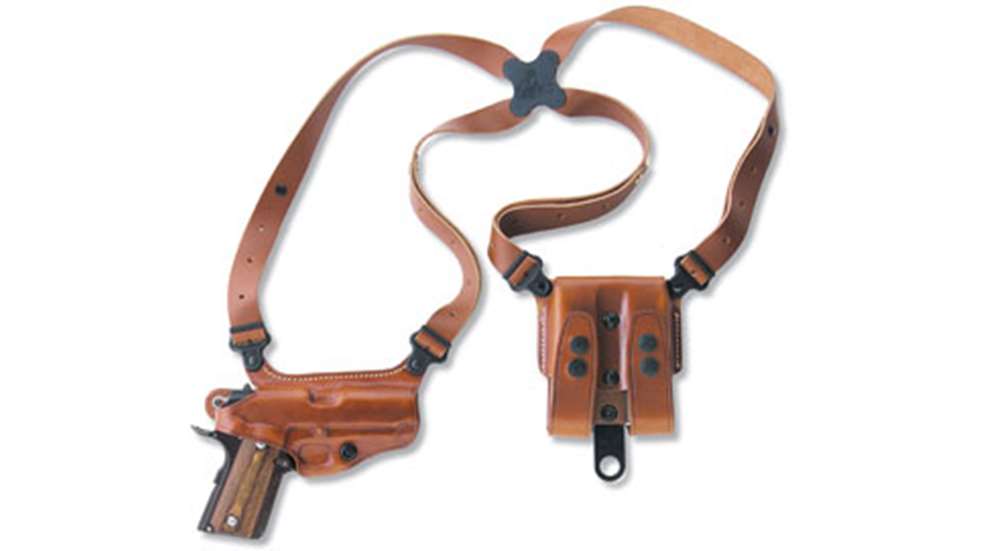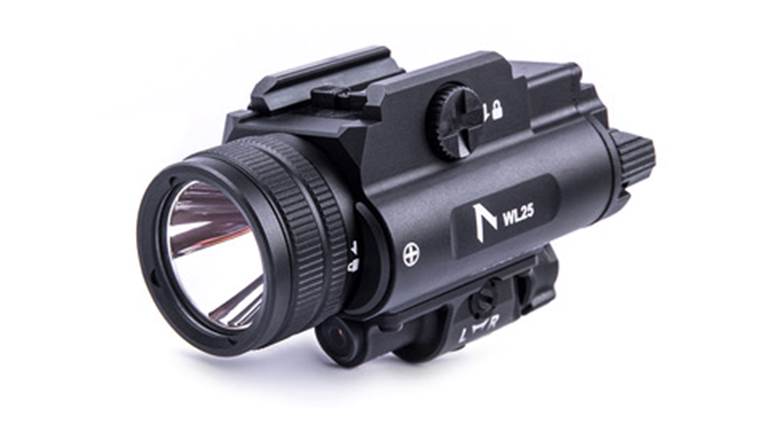
Don Johnson had a powerful influence on both fashion and popular culture as Sonny Crockett in “Miami Vice.” Millions of men across America wore T-shirts under Italian sport coats, white linen pants, sockless loafers, pastel colors and five o’clock shadow during the 80s.
He also influenced another more discreet trend—shoulder holsters. On the show, Crockett carried one of three pistols—a Bren Ten, a Smith & Wesson 645 and a Smith & Wesson 4506—in a shoulder rig that eventually became known as the Galco Miami Classic after Rick Gallagher, president of Galco Gunleather, flew to the set to personally fit Johnson in what was then known as the Jackass Rig because the actor was dissatisfied with his previous holster.
There are many references to shoulder holsters in both fiction and history. Old West gamblers often carried small revolvers under their coats, while it’s believed Elliot Ness carried a 2-inch Colt under his arm while pursuing Al Capone. Mickey Spillane’s Mike Hammer frequently carried a .45 automatic in a shoulder rig, and, of course, who can forget James Bond who always carried his Walther PPK in a shoulder holster under his expertly tailored tuxedo.
Shoulder holsters are not strongly advocated by self-defense experts, though shoulder carry does have its supporters.
“You don’t often see them in competition or training, but shoulder holsters are practical real-world carry systems,” said Mike Barham of Galco Gunleather. “They’re comfortable and everything is together in one system. You just grab and go.”
Women do particularly well with a shoulder holster as it fits their bodies efficiently. Women tend to be higher in the hip than men, which makes waist carry uncomfortable for them. Shoulder rigs also do well for people who spend long periods of time sitting in vehicles for their jobs, such as truck drivers and pilots, as the handgun is accessible but hidden.
The main reasons that shoulder carry has lost popularity over the years are speed and safety. A practiced strong-side draw from the waist is usually faster than reaching across the body to swing a gun around on target. Also, it is very difficult to draw from a shoulder holster without sweeping someone with the muzzle. In fact, many police agencies have banned shoulder rigs for this very reason. And if the handgun is situated horizontally or angled for a faster draw, the gun is technically pointed at anyone who is behind the carrier.
There are three main styles of shoulder holsters—horizontal, vertical and angled—each named for how the gun is held under the shoulder.
The vertical rig, where the muzzle is pointed down, is probably the slowest on the draw, but it allows for a larger gun to be carried, such as a Government Model 1911 or a full-size revolver. To draw from a vertical shoulder holster, the user quarters away from the threat with the gun arm while reaching across the body to obtain a firm grip on the gun. At the same time, he or she raises the support arm to be out of the gun’s path as the user draws the gun up and across the body to quickly get the muzzle on the intended target. One benefit of a vertical shoulder holster is the potential of a support-hand draw if needed.
The horizontal shoulder holster lends itself to a faster draw than the vertical holster. Once again, the user reaches across the body as the support arm rises away from the muzzle as the handgun is pulled straight out across the body to come to bear on the target. However, unless the carrier is very large, only shorter barreled guns can be used in this type of holster without the muzzle printing through the back of the cover garment.
The angled shoulder holster also lends itself to a faster draw, but men with broad chests sometimes have a difficult time obtaining a firm grasp on the gun’s handle. To compensate, most start the draw by snagging the handle with the middle finger to pull the holster forward enough to obtain a grip. However, since the muzzle is angled up toward the armpit and the brachial artery, extreme caution must be taken to keep the finger off the trigger when drawing from this type of shoulder holster.
While shoulder holsters may have various shortcomings, they also have their virtues. They are comfortable enough for all-day carry, but their largest benefit to a gun carrier is an easily hidden draw. To obtain a grasp on the gun, the user only has to cross his or her arms. The user still has to get the gun out and into action, but starting with a grip on the gun helps speed things up.
Shoulder holsters have been around for about as long as the idea of concealing a gun. They’re not for everyone, but for some, shoulder holsters remain a practical carry option. And there is no doubt that Sonny made them look cool.



































